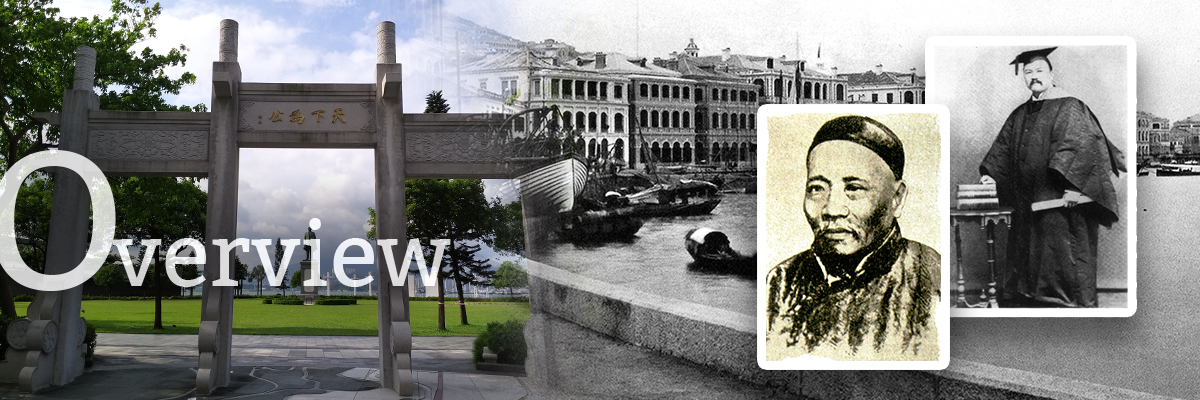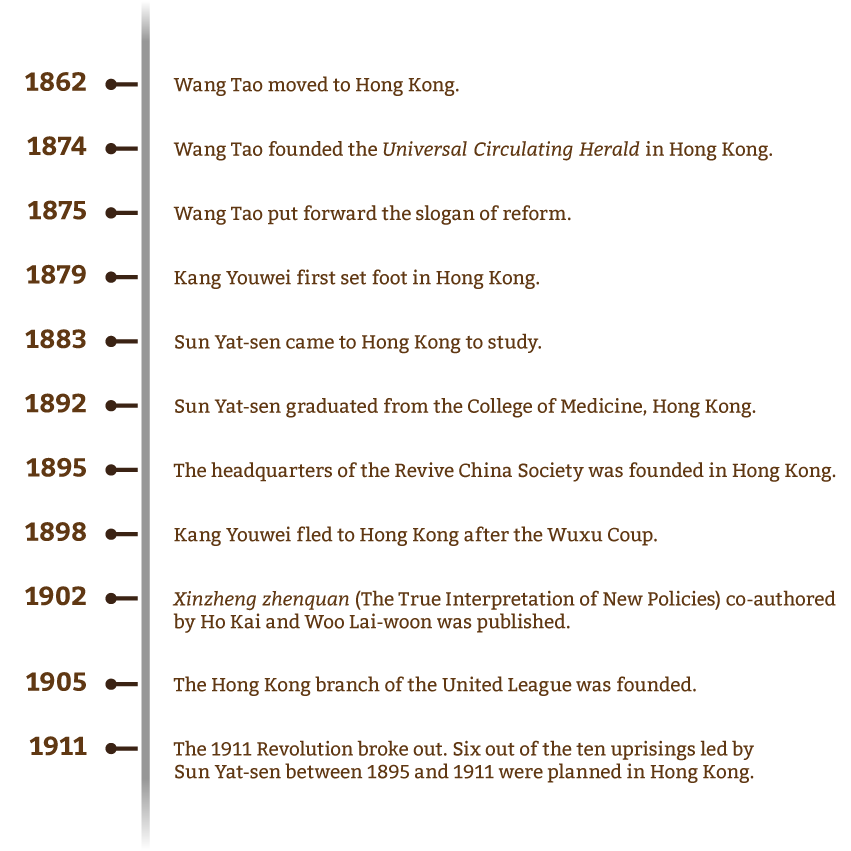Hong Kong assumed a unique role in modern Chinese history after the First Opium War. Geographically, Hong Kong serves as a traffic hub between East and West as it is connected to the Chinese mainland. Socially, Hong Kong Chinese, the majority of the local population, was under the British rule. The special geographical environment and social conditions turned Hong Kong into a melting pot of Chinese and Western thoughts and cultures. Some local scholars and students as well as those from the Chinese mainland gained new insights and developed new thinking from the evolving social environment and Western thoughts. They became the advocates of reform and revolution in Hong Kong.
Wang Tao (王韜), who lived in Hong Kong for a long time, worked as a translator and ran a newspaper. Familiarised himself with different aspects of Hong Kong society, he pondered the national course of development. Hong Kong was crucial to Wang in developing his new reform ideas. Great thinkers Ho Kai (何啟) and Woo Lai-woon (胡禮垣) co-authored a series of books of political commentary in Hong Kong. The ideas they put forward, which aimed to help China progress, influenced people such as Kang Youwei (康有為), and laid the foundation for the Hundred Days’ Reform. Hong Kong was the breeding ground of Sun Yat-sen’s (孫中山) revolutionary ideas. It was also an important revolutionary base. The 17-year-old Sun arrived in Hong Kong in 1883, receiving two years secondary and five years university education. His stay in Hong Kong was crucial for him in forming his revolutionary ideas. Sun and other revolutionaries advocated to overthrow the Qing dynasty in Hong Kong. They established revolutionary groups, raised funds for revolution, recruited fellows, and planned armed uprisings here. Indisputably, Hong Kong was a significant ground for China’s reform and revolution in modern Chinese history.





